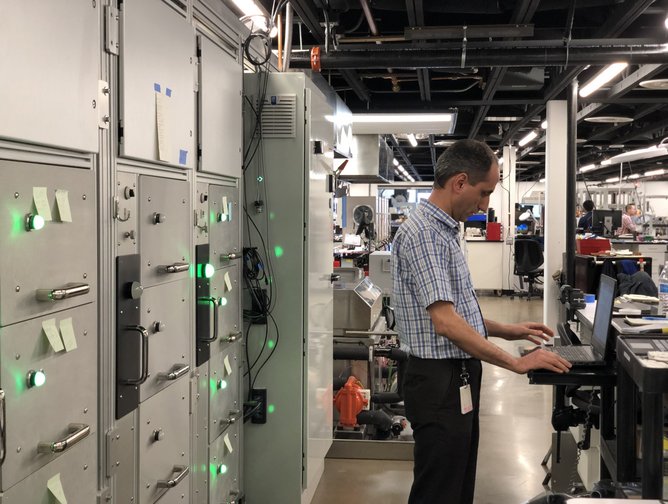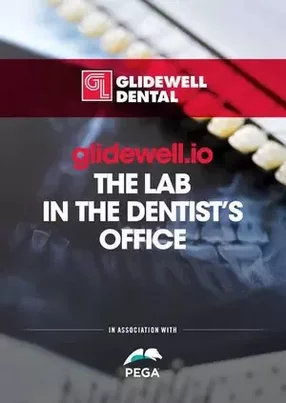Glidewell Dental: launching an in-office chairside milling solution for dentists powered by digital
Just how did Glidewell Dental become the largest privately owned dental laboratory in the world? In 1970, spurred by a desire to make rehabilitative dentistry accessible to all, Jim Glidewell, CDT, applied a unique blend of technical knowledge, business principles and marketing philosophies to expand his one-man kitchen table operation into a multifaceted technology company among those at the forefront of the oral health industry today. His focus from day one has been on developing new equipment and techniques with the objective of keeping dentistry affordable for both clinician and patient. He has consistently reinvested the profits of the business into its industry-leading R&D department (in which Glidewell himself remains heavily engaged) which has given dental practices access to many award-winning products, such as BruxZir Solid Zirconia restorations. There can’t be that many founders and CEOs still leading their company half a century on, yet preparations are underway for a yearlong 50th anniversary celebration in 2020.
Mike Selberis joined Glidewell as CIO in 2008, just a year before the first BruxZir product hit the market. In that role he has overseen the increasing adoption of technology platforms to run the business; however, he also sits on the American Dental Association (ADA) and ISO Standards Committees for CAD/CAM, and leads a team of automation specialists responsible for a growing number of innovations in the field of mass customization. As we’ll see, this is central to the company’s future growth and relevant to Selberis’ promotion in 2016 to Chief Technology Officer (CTO), which extended his oversight to hardware engineering, CAD/CAM software and material sciences.
The launch of BruxZir solidified Glidewell as the leading manufacturer of zirconia materials for the dental market. Zirconia (zirconium oxide) is an ideal material for making dental restorations thanks to its tooth-colored shading and impressive durability, and BruxZir is the top selling brand in the United States, having been prescribed for more than 18mn restorations. Its rapid adoption by dentists and patients alike has spearheaded a global shift from full-cast and porcelain-veneered restorations to monolithic ceramic crowns and bridges.
Enter glidewell.io
Far-sighted investment in material science made in the first decade of this century paved the way for the development of the software- and hardware-based technology that is transforming Glidewell Dental, and disrupting global dentistry, Selberis believes. When it comes to restorations, dentists expect reliability, speed and consistent quality. Traditionally they are accustomed to dealing with small dental laboratories employing five people or fewer, where there is a limited amount of variation from one restoration to the next. Glidewell, however, has always aimed to provide premium restorations on a large scale to help meet public demand. “How could Glidewell guarantee consistency of the products?” Selberis ponders. “For me, that was the starting point in our journey toward digital transformation utilizing software with technologies such as artificial intelligence (AI) and robotics in order to predictably produce the optimal outcome for each patient.”
The challenge was to provide a personalized service in higher volumes, in a way that would work for both clinician and patient. Traditionally, someone needing a crown would visit the dentist for a physical impression of their teeth, which was then sent to the laboratory where the prosthesis would be made. The digitization of the manufacturing process was essential to eliminating the variability inherent in the old system; however, the patient would still have to book a follow-up appointment to receive the final prosthesis.
Imagine if you could book a single hour-long appointment and leave the dentist’s office with a zirconia crown in place! By eliminating unnecessary appointments, the dentist can limit administrative work and maximize his or her chair time, while the patient will have to take less time off work and undergo less stress. So Glidewell’s R&D came up with a solution that could deliver just that. “Last year we launched the glidewell.io In-Office Solution, which allows a dentist to produce a BruxZir zirconia crown that can go straight into the patient’s mouth when the tooth is prepared. That’s something only our company has been able to achieve!”
Instead of taking a traditional impression, dentists using glidewell.io capture a digital rendering of the patient’s dentition using an intraoral scanner. For this entry point of the process, Glidewell secured an alliance and distribution agreement with Align Technology, whose iTero Element intraoral scanning system leads the North American market. Glidewell Dental has provided digital laboratory fabrication services for hundreds of thousands of iTero restorative cases, and was familiar with its advantages. Once the patient has been scanned, Glidewell’s fastdesign.io software is able to automatically propose a design for the restoration, which the dentist can accept or revise according to preference. From the same software interface, the dentist can either prescribe and request a restoration from Glidewell Laboratories, or send the design direct to the fastmill.io In-Office Unit for immediate chairside milling.
This package effectively provides the dentist laboratory capabilities in the comfort of the office, explains Selberis. “We allow them to take the strongest industry-standard material, a BruxZir zirconia crown, and mill it without having to put it into a furnace.” Normally, at the laboratory the crown would have to cure in a furnace for some hours, but as supplied with the fastmill.io it is pre-hardened. Nobody else has been able to mill zirconia in its hardened state, he adds with pride.
“It’s thanks to our vertical integration, because we are the source of the material, develop the CAD/CAM software and the AI piece, and engineer and manufacture the in-office mill, that we are the only company that can bring this purpose-built system to market.”
Cloud formations
Glidewell has created an ecosystem with a single focus, to make the experience more pleasant for the patient and more efficient for the practitioner. By compressing years of lab expertise into a small form factor, glidewell.io has attracted high demand since it came on the market in March 2018 – not surprising when the clinician’s investment can be recouped within a year. “Because of our vertical integration we’ve been able to develop this technology at a system level, at a much lower price. To allow this, we developed our all-in cloud strategy together with Amazon Web Services about five years ago, when we began developing our CAD/CAM software on their cloud and this allows us to very easily extend the benefits into the dentist’s office.”
And yet the synergy between clinician and lab goes much further than this. “glidewell.io is an ecosystem that provides the solution in the dentist’s office but also networks seamlessly with our laboratory,” he explains. “So, for the things that they can’t do chairside, they can communicate with us much more easily. We have provided this platform as an extension of the laboratory, as if it were another member of their treatment team. We have made it much easier for them to consult with us as needed.” For unusual cases featuring added complexity, Selberis emphasizes that today’s automatic design proposals may not be the sole solution. “As much as we’ve done to simplify a significant portion of everyday casework, there are always outliers requiring the sophistication of a human technician. Through digital transformation, we make it simple for them to gain assistance from us however they choose, marrying human and artificial intelligence to provide the best crown possible for each individual patient.”
Technology innovations
Raising that experience to a yet higher level Glidewell has introduced an IoT button along the lines of the Amazon Dash button. “Our Glidewell Wi-Fi connected pickup button has one job only. As things stand when you send cases to the lab either their driver comes out or a carrier will be booked. Typically, dental practices do business with up to four different labs so they spend a lot of time on the phone and there’s a lot of scope for delay and error. I looked for a way to simplify that and that is how the Glidewell Pickup button was born. When you have one or more cases ready you just press the button to automatically schedule the case, generate a shipping label, and it will be picked up by a FedEx or UPS driver within a couple of hours.”
glidewell.io and the Pickup button are important milestones on the company’s journey towards fuller automation. It’s all about providing a simpler, more personalized customer experience. To help decide the ‘next best action’ for assisting an individual customer, Glidewell has partnered with customer experience and automation specialist Pega, to provide an AI solution with the goal of servicing a ‘segment of one’. “Big Data and analytics are a start, but the real value comes when you can turn data into insight, into action, which means making coordinated decisions in real time, across all channels,” says Mike Selberis. “We probably service over half of the USA’s dentists, so to take the most appropriate actions at the right time for each customer we need a system that is automated, and that is a part of our digital transformation.”
50 years on, Selberis remains convinced that technology will deliver still better outcomes for dental patients. Work continues on a 3D printing solution that allows dentists to design and create, using the glidewell.io platform, a temporary crown or bridge from composite material, nightguards, surgical guides, and study models, again at a single visit. Furthermore, definitive restorations featuring additive manufacturing techniques are almost certainly in the future. “It will likely take years to fully leverage the work we have started, But it’s our ability to take all the knowledge we have gained over the years and turn our data into a tool that will enable us to further enhance the dentist and patient experience. So we will surely become more of a knowledge and technology driven business.”





